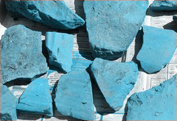

| No.269 May 2024 | Monthly Newsletter |
Aspull Ring Ditch Restart |
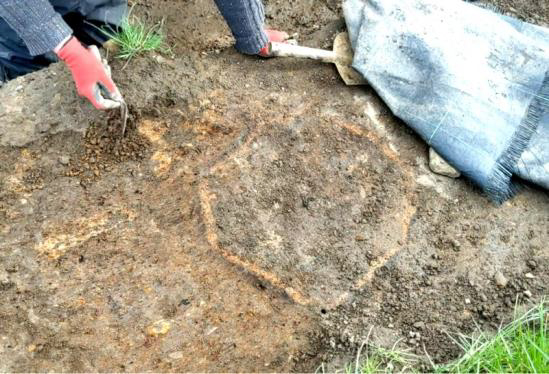 Last month found us back in the field to restart our excavations in earnest. A quick visit in February had enabled us to completed a coring survey on the east side, showing that there was no entrance on that side (Newsletter 267). That visit had also given us an opportunity to start removing the remaining topsoil from Trench 3a, in the area near our first urn discovery. This unexpectedly revealed a strange octagonal shape in the underlying mottled clay layer. Its outline was traced in soft orange clay with an outer layer of blackish material. At first it looked like another pot, but it seemed on the big side and so far, there has been no evidence of a cremation. Towards the end of last year, we also came across some very strange stones with seemingly parallel grooves cut into them (three all together). They caused us some serious pondering over the winter months as to what they could represent. We have been unable to find anything like them in any other Bronze Age or Neolithic context. However recent close study of one of the small ones has given us a clue. In the low afternoon sunlight, small cells can be detected running along the tops of the ridges. 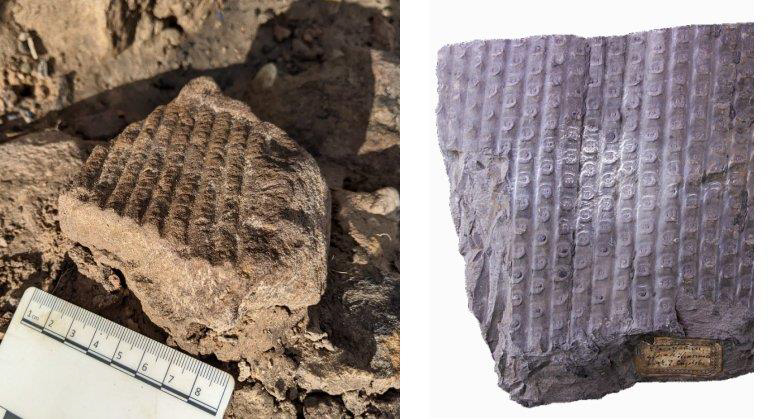 This makes it reminiscent of a tree-like fossil occurring in the Carboniferous period known a Sigillaria. Now that the larger grooved stone has been exposed to the elements, it is also showing signs of fossils on its surface. If this is the true explanation, it's still quite a significant find, i.e. having a collection of fossils in close proximity to our sandy clay mound (perhaps our primary burial). Fossils have been found before on prehistoric sites suggesting they were venerated by the ancient communities, who wouldn't have known how they were created. Our recent work has involved cutting a trench between Trench 1b, where we found an area of large flat stones, and Trench 3a. This is to see if there is any connection between the stones and the sandy clay mound in Trench 3a. It's early days but the stony layer does seem to be following the rising line of the sandy clay mound. As always you can follow our progress on our website here. 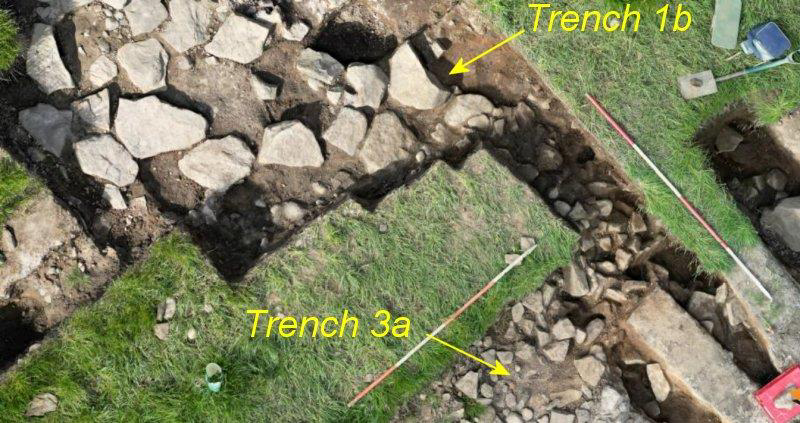 Wigan History FestivalThis event, over the last weekend, turned out to be very successful, with estimates of between 600 and 700 visiting over the two days. Hats off to Chris Drabble who manned our display on both days - so busy with interested people that he hardly had time for a break. Peter Layland's presentation of our Parish Church Tower project went well and my presentation of the Aspull project also seemed well received (looks like we will be getting more volunteers). A short video presentation of the Tower project can be viewed here and Chris's footage of our Aspull work can be view here, here and here. 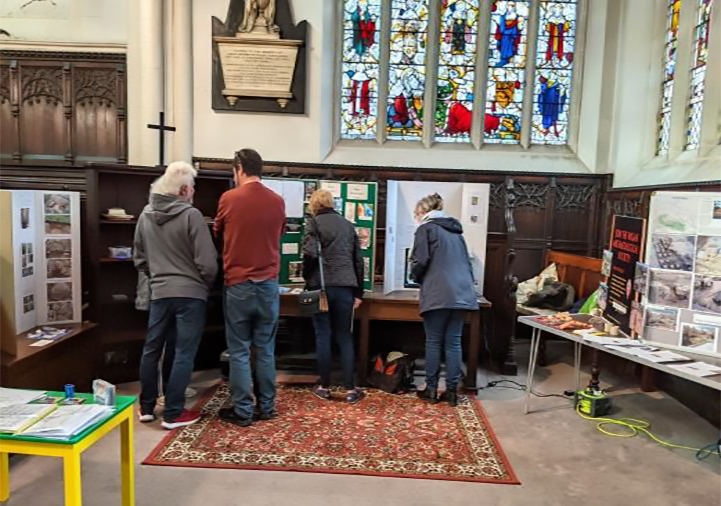 Next MeetingWednesday 1st May - at the Real Crafty on Upper Dicconson Street starting at 7.30pm as usual. In 2004 a single brooch found by a detectorist led to one of the most exciting discoveries in the Northwest. A full-scale excavation by Oxford Archaeology North (OAN) revealed the site to be an exceptionally rare Viking-age burial. It was found in a field just outside the small village of Cumwhitton in the Eden Valley, just to the south-east of Carlisle. Ten years later, with the post excavation work complete, the full story could be told. Dr Rachel Newman, who was involved with the project from the start, will be coming to give us an insight into this fascinating discovery (as well as other things the unit have been up to over recent years). Hope to see you there - BA. |